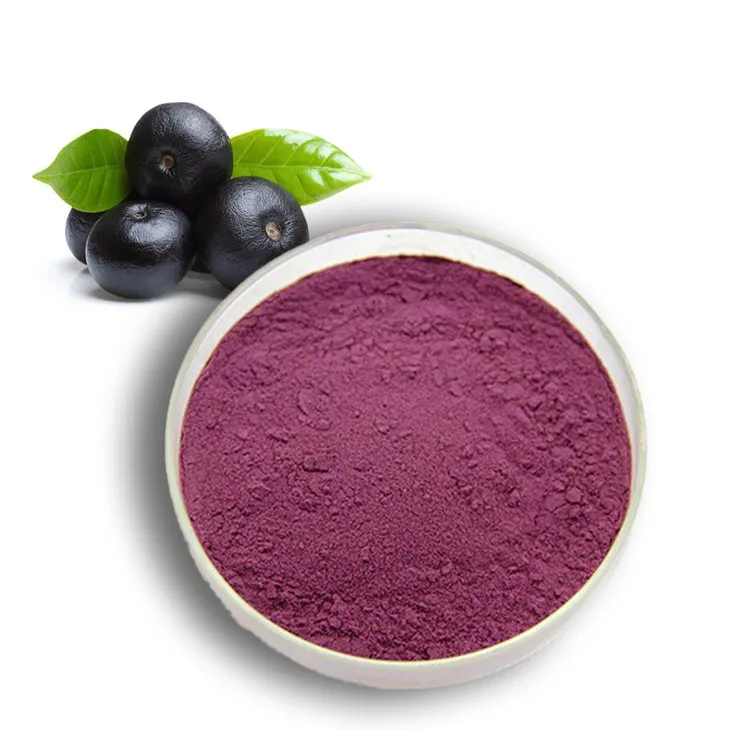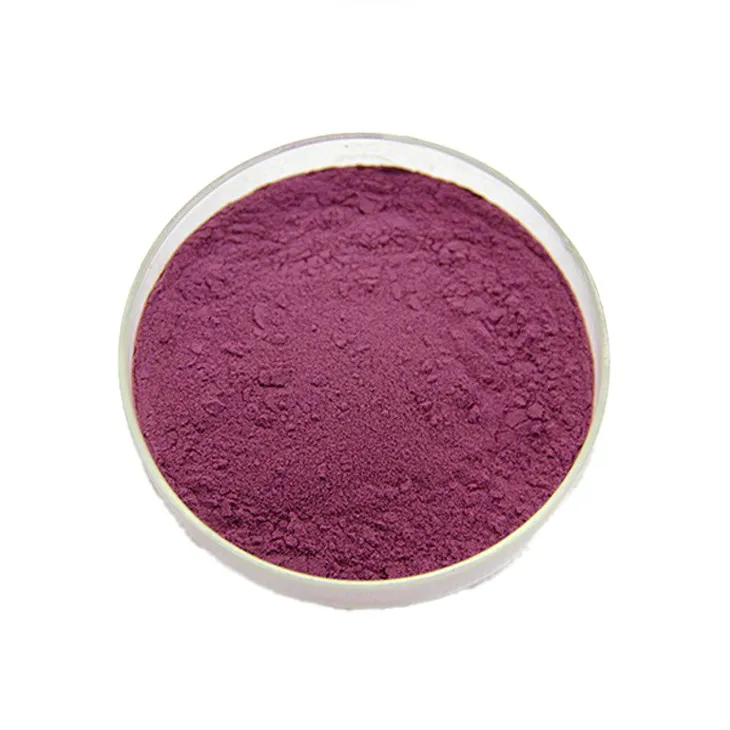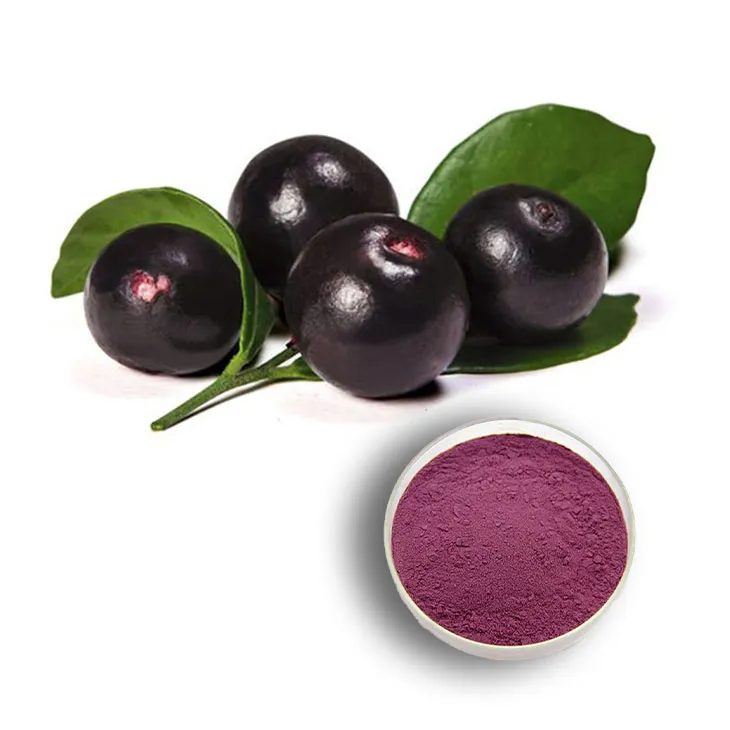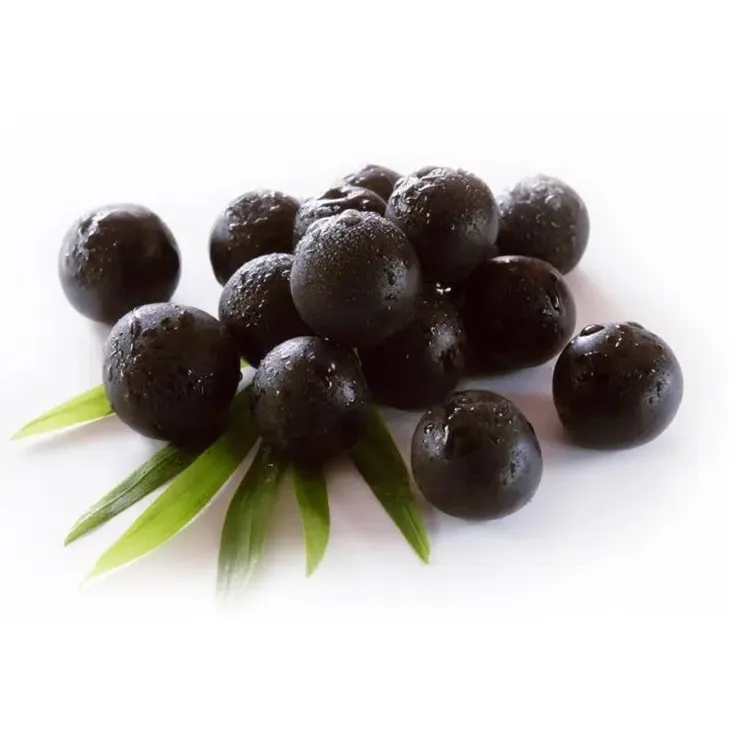- 0086-571-85302990
- sales@greenskybio.com
Acai Berry Extract: China vs. the United States
2024-11-28

1. Introduction
The acai berry, native to the Amazon rainforest in Brazil, has gained significant popularity around the world due to its rich nutritional profile. Acai Berry Extract is a concentrated form of the beneficial compounds found in the berry. In recent years, it has entered the markets of both China and the United States, but the ways in which it is received, distributed, and consumed vary greatly between the two countries.

2. China: A Nascent Market
2.1 Import
In China, the import of Acai Berry Extract is still in a relatively early stage. The Chinese government has strict regulations regarding food imports, which means that importers need to go through a series of complex procedures. For example, they must ensure that the product meets Chinese food safety standards, including requirements for pesticide residues, heavy metal content, and microbiological safety. Imported Acai Berry Extract often needs to be accompanied by detailed documentation, such as certificates of origin and quality inspection reports.
However, with the growth of China's economy and the increasing demand for high - quality imported health products, the import volume of acai berry extract has been gradually increasing. Many Chinese importers are attracted by the potential of the acai berry extract market, especially considering China's large population base and the rising awareness of health and wellness.
2.2 Distribution
Distribution channels for acai berry extract in China are still developing. Currently, a significant portion of the imported acai berry extract is distributed through e - commerce platforms. These platforms provide a convenient way for consumers to access the product, especially those in large cities. For example, on platforms like Taobao and JD.com, consumers can find a variety of acai berry extract products from different brands.
Another distribution channel is through specialty health food stores. These stores are mainly located in urban areas and target consumers who are more health - conscious. However, compared to e - commerce platforms, the number of these specialty stores is relatively limited, and their geographical coverage is not as wide.
2.3 Consumer Acceptance
Consumer acceptance of acai berry extract in China is growing but still has room for expansion. In urban areas, especially among young and middle - aged consumers, there is an increasing interest in imported health products. The concept of "natural" and "nutritious" associated with acai berry extract is appealing to these consumers. For example, many consumers believe that acai berry extract can help improve their skin condition, boost their immunity, or aid in weight loss.
However, there are also some challenges in terms of consumer acceptance. One of the main challenges is the lack of widespread knowledge about acai berry extract. Many consumers in China are still not very familiar with this product, and there is a need for more marketing and education efforts. Additionally, the relatively high price of acai berry extract compared to local health products may also limit its wider acceptance among some consumers.

3. The United States: A Mature Market
3.1 Import
In the United States, the import of acai berry extract is well - established. The U.S. has a relatively open market for food imports, with clear regulations and standards. Importers of acai berry extract need to comply with U.S. Food and Drug Administration (FDA) regulations. These regulations ensure the safety, quality, and proper labeling of the product. Many Brazilian acai berry extract suppliers have established long - term relationships with U.S. importers, facilitating a stable supply of the product.
The U.S. imports a large amount of acai berry extract each year, mainly to meet the high demand from the domestic market. The demand is driven by various factors, such as the popularity of health and fitness trends, and the growing awareness of the benefits of superfoods like acai berries.
3.2 Distribution
Distribution of acai berry extract in the United States is widespread. It can be found in a variety of retail channels. One of the main distribution channels is supermarkets and grocery stores. These large - scale retail establishments carry a wide range of acai berry extract products, from pure extracts to products that are incorporated into other food items, such as acai - flavored yogurts or smoothies. This makes it very convenient for consumers to purchase the product during their regular shopping trips.
Another important distribution channel is health food stores and supplement stores. These stores target consumers who are specifically interested in health and wellness products. They often carry a more diverse selection of acai berry extract products, including those with different concentrations and formulations. Additionally, online retail is also a significant part of the distribution network in the U.S., with many e - commerce platforms offering a wide variety of acai berry extract products.
3.3 Consumer Acceptance
Consumer acceptance of acai berry extract in the United States is high. It has been closely associated with fitness and healthy living trends in the country. Many Americans view acai berry extract as a superfood that can provide a variety of health benefits. For example, it is often promoted as a source of antioxidants, which can help fight free radicals and reduce the risk of chronic diseases.
The popularity of acai berry - based products, such as acai bowls, which are a trendy and healthy food option in the U.S., has also contributed to the high consumer acceptance. These products are not only popular in health - conscious communities but also in mainstream consumer markets. Additionally, the marketing and advertising efforts by acai berry extract manufacturers and retailers have played a significant role in promoting the product and increasing consumer awareness and acceptance.

4. Comparison and Contrast
4.1 Import Regulations
China has stricter import regulations compared to the United States. In China, importers need to meet more complex requirements in terms of product safety, documentation, and quality control. The U.S., while also having strict regulations through the FDA, has a more streamlined process for established importers. This difference in import regulations can affect the availability and cost of acai berry extract in the two markets. For example, the complex import procedures in China may lead to higher import costs, which may be passed on to consumers in the form of higher prices.
4.2 Distribution Channels
The distribution channels in the United States are more diverse and widespread compared to China. In the U.S., acai berry extract can be easily found in supermarkets, grocery stores, health food stores, and online platforms. In China, while e - commerce platforms play a significant role, the presence of acai berry extract in traditional retail stores is relatively limited. This difference may be due to differences in consumer shopping habits and the development stage of the retail market in the two countries.
4.3 Consumer Acceptance
Consumer acceptance in the United States is much higher than in China. In the U.S., acai berry extract has been deeply integrated into the fitness and healthy living culture. In China, although the awareness is growing, it still has a long way to go. Marketing and education efforts need to be strengthened in China to increase consumer acceptance. In the U.S., continuous marketing and innovation in product forms, such as the development of new acai - based food and beverage products, have further enhanced consumer acceptance.

5. Conclusion
In conclusion, the acai berry extract market in China and the United States shows significant differences in terms of import, distribution, and consumer acceptance. The United States has a more mature market with higher consumer acceptance, diverse distribution channels, and well - established import processes. China, on the other hand, is a nascent market with great potential for growth. As the Chinese market continues to develop, it is likely to see an increase in the import volume, expansion of distribution channels, and a rise in consumer acceptance of acai berry extract. Understanding these differences can help both Brazilian exporters and domestic players in China and the United States to better target their markets and develop appropriate marketing strategies.
FAQ:
1. What are the main differences in the import of acai berry extract between China and the United States?
In the United States, the import of acai berry extract is likely more streamlined due to a longer history of dealing with such products. There are established regulatory frameworks and well - known import channels. In China, as the market is in a nascent stage, the import may be more carefully regulated to ensure product quality and safety. Import volumes in the US might be relatively higher considering its more mature market, while in China, import volumes are expected to grow as the market develops.
2. How does the distribution of acai berry extract vary in China and the United States?
In the United States, acai berry extract can be found in a wide range of stores, from large health food chains to specialized fitness stores. It may also be easily available online. In China, distribution may initially be more concentrated in larger cities and areas with higher levels of international trade. As the market grows, it will likely expand to other regions. Also, in China, e - commerce platforms are likely to play a significant role in the distribution, similar to the US but with different dominant players.
3. What factors influence consumer acceptance of acai berry extract in China and the United States?
In the United States, consumer acceptance is strongly influenced by the fitness and healthy living trends. People are more likely to use it as part of their diet for weight management or to boost energy levels. In China, urbanization plays a role as more urban consumers are exposed to international health trends. Additionally, the perception of imported products as being of higher quality can also influence acceptance. However, cultural differences mean that Chinese consumers may need more education about the product's benefits compared to US consumers.
4. Are there different regulations regarding acai berry extract in China and the United States?
Yes, there are different regulations. In the United States, the Food and Drug Administration (FDA) has certain regulations regarding food supplements, which acai berry extract falls under. In China, there are also strict regulations to ensure food safety and quality. For example, import inspection and approval procedures are in place. These regulations are designed to protect consumers but may have different requirements and scopes in each country.
5. How do marketing strategies for acai berry extract differ in China and the United States?
In the United States, marketing often focuses on the product's fitness - related benefits, such as its antioxidant properties for muscle recovery. It may be endorsed by fitness influencers. In China, marketing could initially focus on the product's imported and natural aspects. As the market matures, more targeted marketing towards specific health concerns relevant to the Chinese population may develop. Social media and online advertising are important in both countries, but the messaging and target audiences may vary.
Related literature
- The Global Market of Acai Berry Extract: A Comparative Analysis"
- "Acai Berry Extract: Regulatory Frameworks in the US and China"
- "Consumer Behavior towards Imported Health Products: The Case of Acai Berry Extract in China"
- ▶ Hesperidin
- ▶ citrus bioflavonoids
- ▶ plant extract
- ▶ lycopene
- ▶ Diosmin
- ▶ Grape seed extract
- ▶ Sea buckthorn Juice Powder
- ▶ Beetroot powder
- ▶ Hops Extract
- ▶ Artichoke Extract
- ▶ Reishi mushroom extract
- ▶ Astaxanthin
- ▶ Green Tea Extract
- ▶ Curcumin Extract
- ▶ Horse Chestnut Extract
- ▶ Other Problems
- ▶ Boswellia Serrata Extract
- ▶ Resveratrol Extract
- ▶ Marigold Extract
- ▶ Grape Leaf Extract
- ▶ blog3
- ▶ blog4
-
Vitamin K2 in China vs. the United States.
2024-11-28
-
Nature's Bounty L - Arginine
2024-11-28
-
The Pure Rosehip Extract Most Worth Buying.
2024-11-28
-
The best yohimbe bark extract on the market.
2024-11-28
-
Standard - process Mulberry Leaf Extract.
2024-11-28
-
Elderberry Extract
2024-11-28
-
Grape Seed Extract
2024-11-28
-
Eucommia Ulmoides Extract
2024-11-28
-
Cat Claw Extract
2024-11-28
-
melatonin extract
2024-11-28
-
Stevia Extract
2024-11-28
-
Maca Extract
2024-11-28
-
Troxerutin
2024-11-28
-
Pomegranate Extract
2024-11-28
-
Lemon Extract
2024-11-28





















